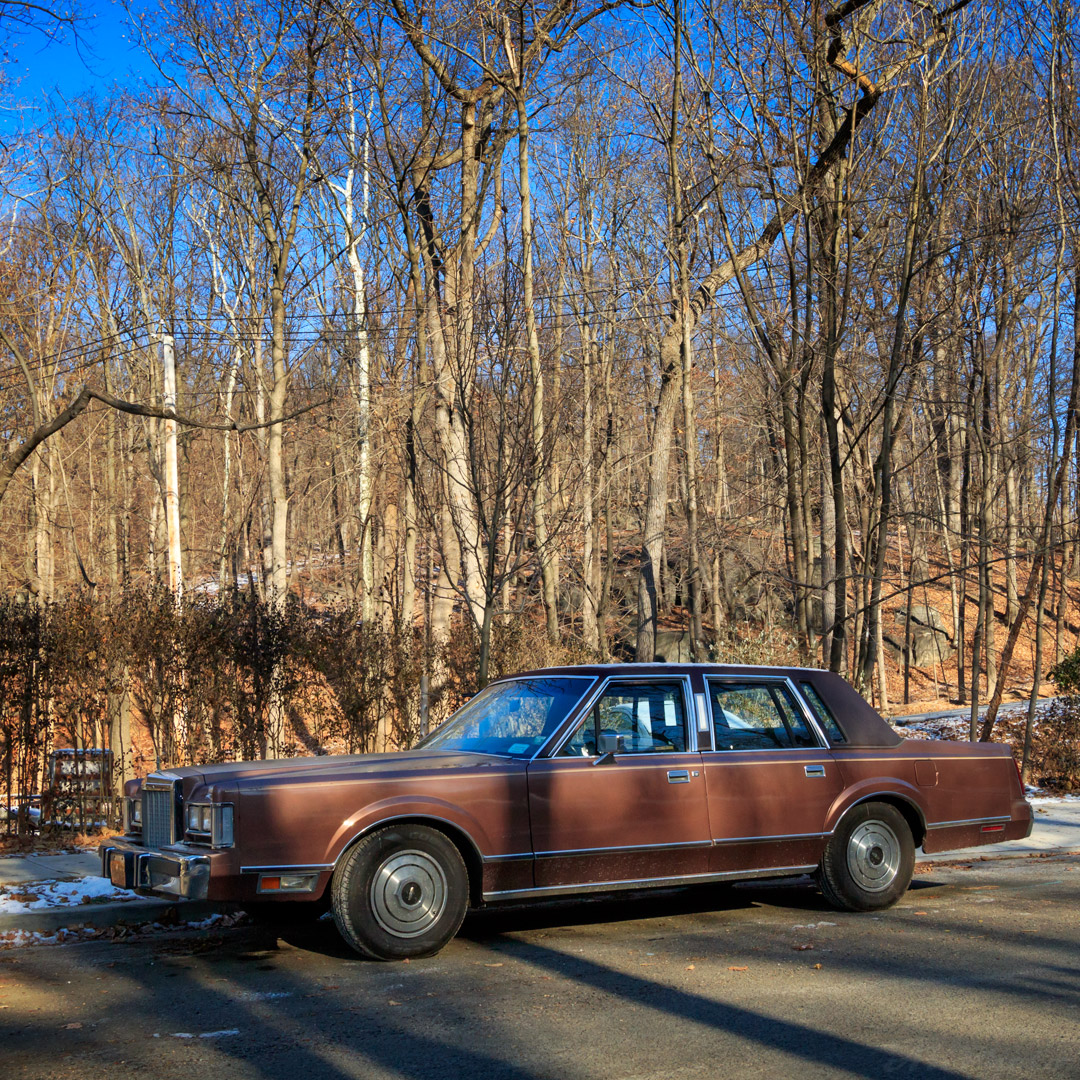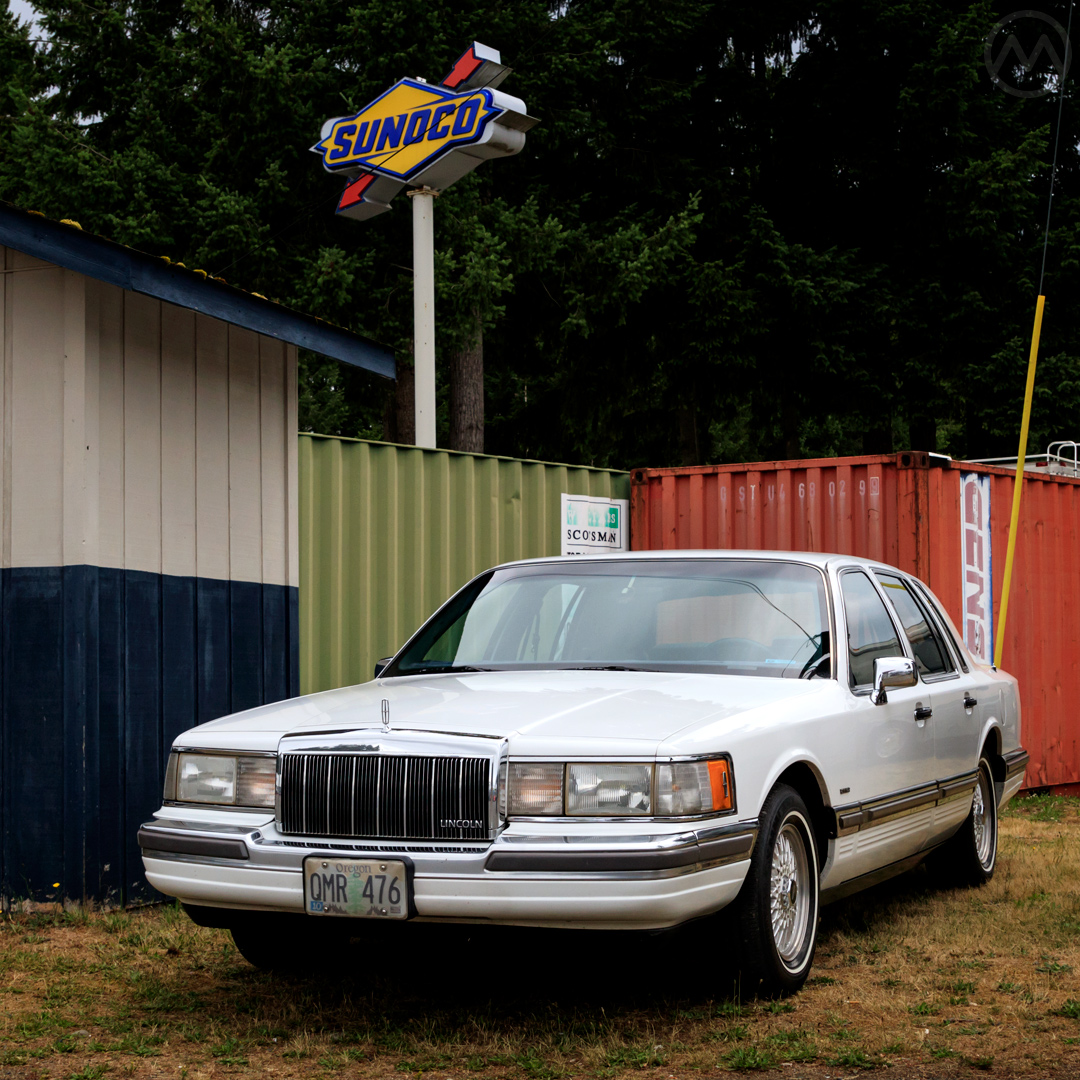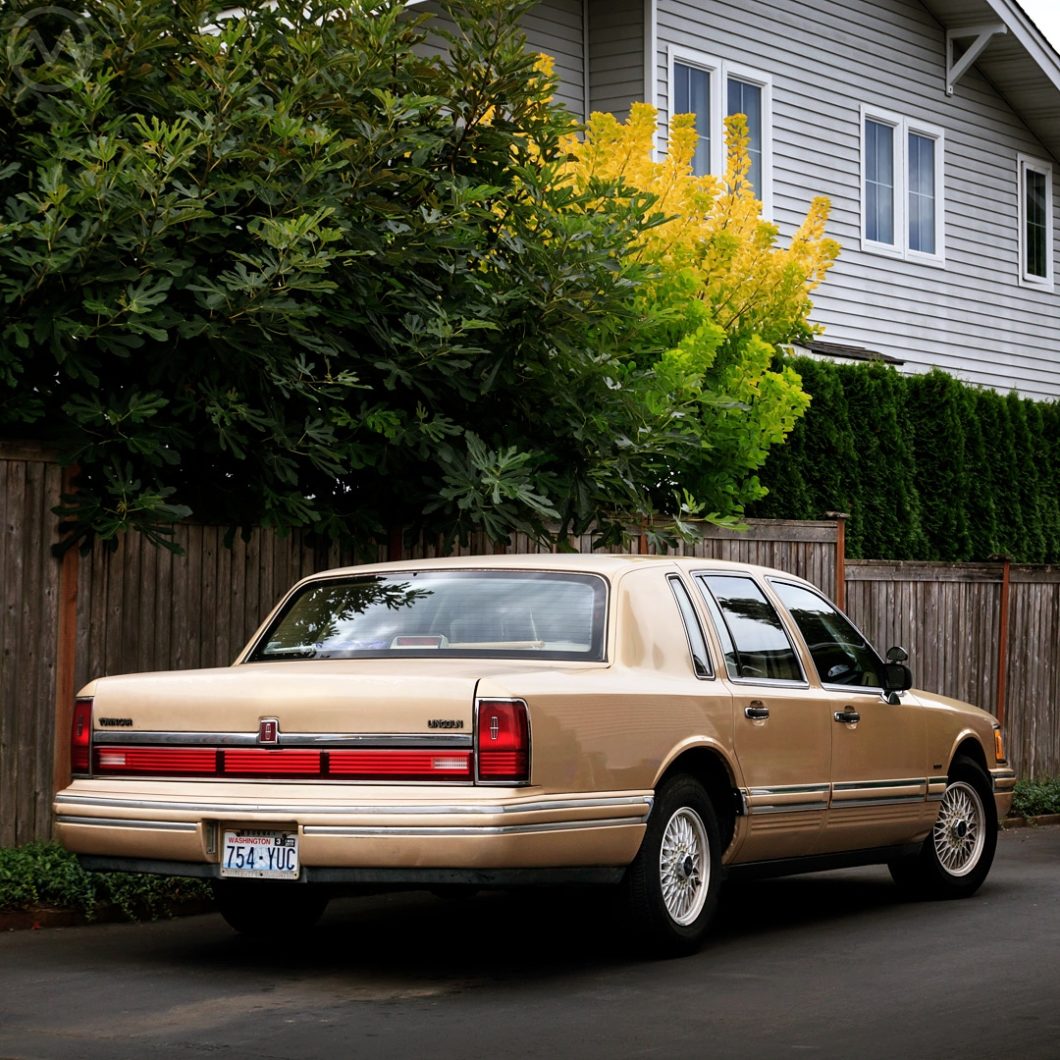“We had an established identity that we wanted to keep, but … how do you do that and make the car look fresh and new?” said Gale Halderman in 1989. He was talking to the LA Times about the then-new Lincoln Town Car, freshly restyled for 1990. Halderman led the styling section on the 1990 Town Car (internal development code: FN36), but the whole team had similar sentiments.
Remaking something that is very popular and has a loyal fan base is one of the hardest tasks any designer can take on, but the remaking of the Town Car for the 1990s was particularly difficult.
Lincoln’s designers had to thread several tight needles. First, it was defined as aiming to be an updated car for a new time, and one that would hopefully find new competitors. But it was required to re-use older components.
It had to look and feel new, but existing customers had bought their cars almost because the Town Car had shunned change in the 1980s, and many didn’t want it changed at all.
The Panther Town Car
The previous Town Car had been introduced in late 1979, right into the teeth of the second OPEC crisis and a global recession fueled by inflation and oil woes.
In the dark days of 1980 Ford, already having endured several hard years in the U.S. market, lost $1.5 Billion. Big cars, which had recovered to a degree in 1976-77 after OPEC 1, were hit very hard by the second crisis and proved a very hard sell. As a result, the new Town Car faltered.
Ford’s new President, Don Petersen, was not a fan of the Town Car or of cars like it, which he saw as behind the times in both style and dynamics.
The top priority at the time was focusing on new projects, as Halderman would say later, the company was “just holding on until front drive.” Most of Ford’s resources went into the Escort, Tempo, and Taurus in the early 1980s with little thought to the big “Panther” cars, which were after all new in 1978/79.

A hazy vision of Lincoln’s future, with the Town Car downsized into a front-driver late in the decade, was batted around – but the Town Car was essentially a lame duck even in 1981, with no firm plan to replace it. Ever. In the context of 1981’s gas prices and Ford’s continuing losses, that made sense.
GM moved on with an aggressive plan for another downsizing of its full-size vehicles slated for 1984-85, but Ford didn’t have the budget to focus on a similar plan. Instead, the Blue Oval focused on its smaller cars and put all of its chips on new midsize family cars, the Ford Taurus and Mercury Sable.
And then, things suddenly changed.
The price of oil plummeted as the market was flooded with cheap crude in the mid-1980s, and suddenly big cars were back again. Planners John Jay and Nick Zeniuk, responsible for the big Lincolns, soon noticed sales increases beginning in 1982. By 1984, the factory in Wixom was struggling to keep up with demand. Town Car sales had increased 300% from 1980.
With the debut of GM’s downsized Cadillacs late that year, they rose even further. Jay and Zeniuk had been pleading with Petersen and other executives, like design chief Jack Telnack, for a major update to the Town Car to little avail. The only real changes to the car during the 1980s were a rear-end refresh and engine updates.
Once Ford management saw the DeVille and the sales figures for the Town Car, however, they finally got the message. By accident rather than design, as nobody would have predicted the direction the market would take, GM had handed Ford an opportunity to dominate the segment if it continued to invest in the Town Car. New federal regulations for airbags and passive restraints meant it was a good time to update the Town Car overall.
Redesigning A Car Sold On Tradition
Into the big-car friendly environment of the late 1980s stepped Acura, with Lexus and Infiniti waiting in the wings. By then, the reality that foreign competitors (mostly European) had siphoned away a generation of new customers for Cadillac and Lincoln was clear.
To Cadillac and Lincoln’s existing customers cars like the Acura Legend and Audi 5000 were not “luxury cars.” To up-and-coming designers, they were state of the art and the kinds of projects they wanted to work on. Within Ford, the emphasis on design had been to “aero” and “modern” since Telnack’s arrival in the early 1980s.
Now those designers, and the veterans who predated them, had to figure out how to remake the Town Car into something modern that could attempt to vie with newer foreign designs but which would not alienate existing owners.
Customer clinics, often held with loyal Cadillac and Lincoln buyers in places like Florida, uniformly resulted in requests for more chrome, more detail, and more formal styling than what Halderman’s team had in mind.

Ultimately their goals were a cleaner look and better aerodynamics, the latter of which would yield a big reduction in wind noise and better fuel economy too.
Ford’s own veteran executives, notably not Petersen or Telnack, though the latter often had to deliver the message, often opined that they didn’t want the car changed either. Meanwhile, the prospective front-drive project was tacked onto the Taurus development and became the front-drive Continental, a project that was free from the same style constraints.
In the end, after many proposals, Halderman’s team settled on a compromise design that was slick like the Continental idea, but more formal and with more chrome and detail work. The look of the car was locked down by early 1986. Then came the task of productionizing it, and even after the project was underway there was still some resistance to giving it final approval.
For cost reasons, all of Ford’s big cars, starting with the TC, would remain on the “Panther” platform in the 1990s, but the shell and many parts were redesigned, steering, brakes, etc., to accommodate updated crash regulations, airbags, and new technology like anti-lock brakes.
With Ford’s teams busy adding airbags and sliding seat belts to every other car, the prototyping work for the new Town Car was farmed out by engineering head Roger Marshall to IAD in the U.K., best known perhaps for the 1986 IAD Alien concept car but a firm that took on many production car engineering projects in the 1980s.
IAD ultimately became part of Daewoo in the 1990s, but a significant chunk of the FN36 engineering and prototyping was done there.
The production process also involved collaboration with Ogihara of Japan, who had established a manufacturing facility in Michigan and were brought in to make the exterior stampings. Production at Wixom would be well served by “just-in-time” deliveries from Ogihara but the coordination took a long time. This was just one of the many supply chain lessons Detroit was slowly learning about in the 1980s.
The design was finalized at the end of 1988 and 18 months were spent ensuring high standards of quality control, but the car was ready in the fall of 1989. The revised Town Car didn’t miss a beat. Sales continuing at their late 80s pace until 1995, and the car even earned positive accolades from press sources that typically maligned land yachts of any sort.
In the ultimate test of their success, Petersen ended up owning two of them.
The design was lightly facelifted in 1994, but as in the 1980s, nobody could have predicted how long the “Panther” Town Car would last. The car was redesigned cosmetically again in 1997 with a look previewed on the 1993 Aston Martin Lagonda Vignale concept. Production lasted into 2011.

